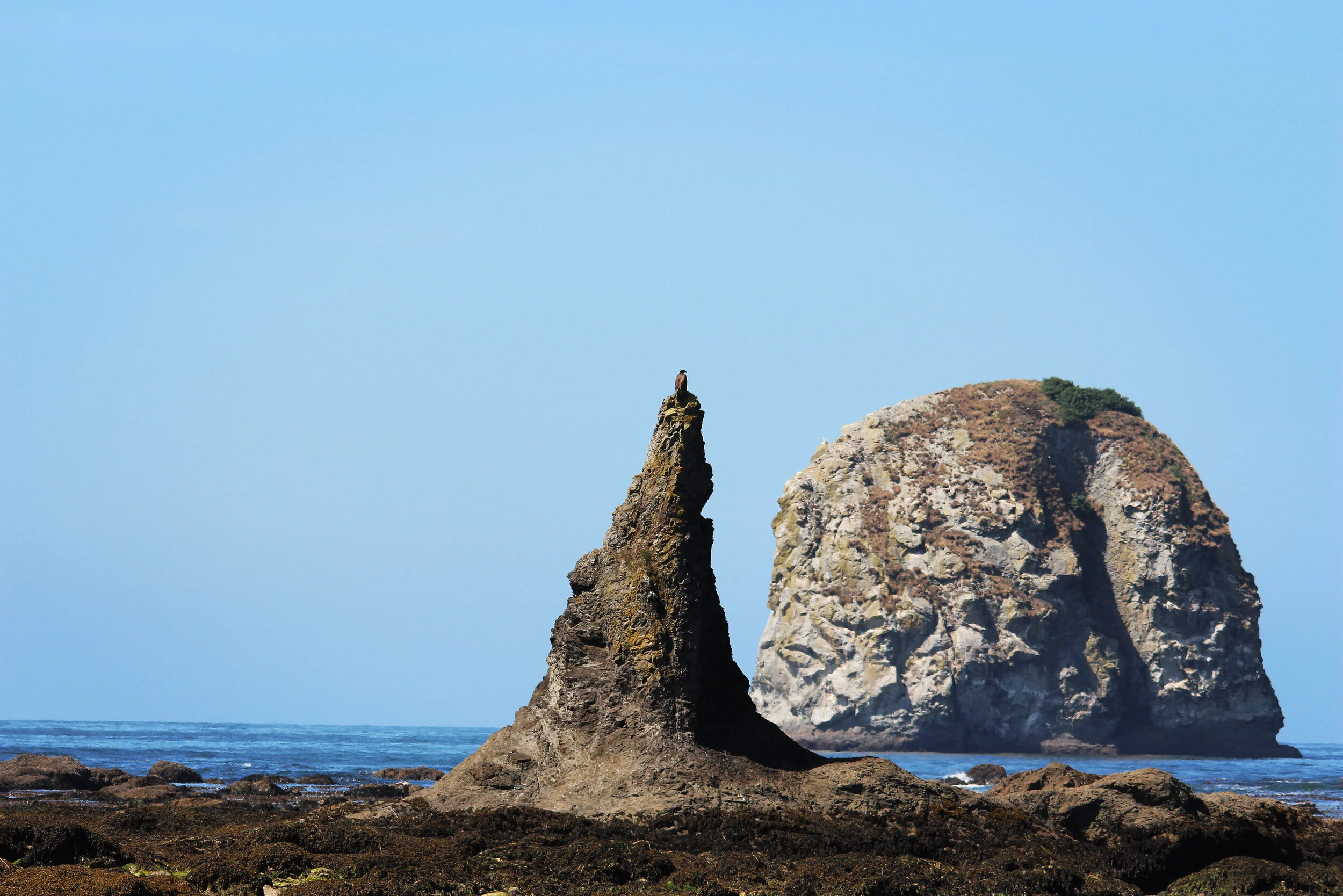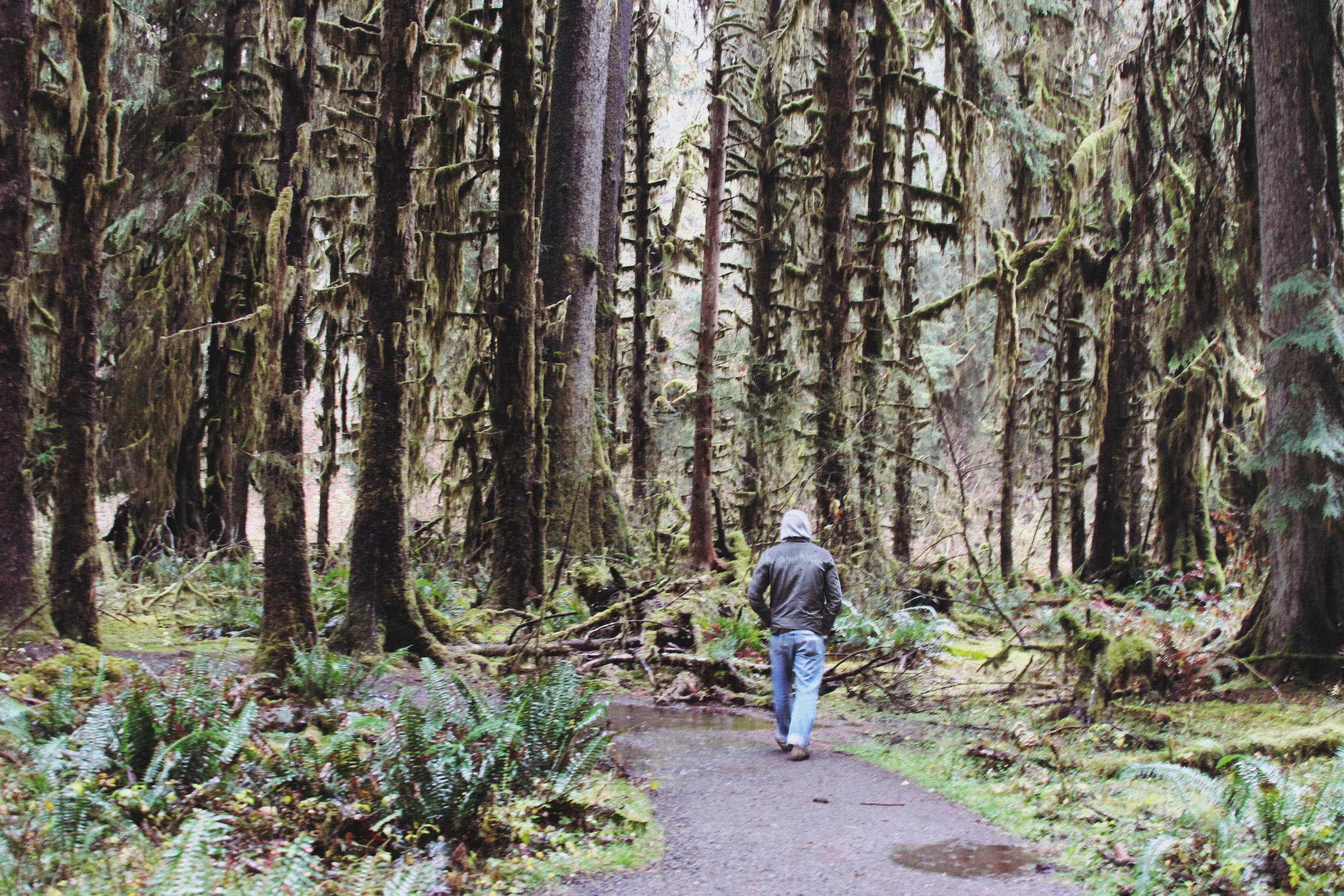
















Your Custom Text Here
Park Number: 23/63
First Visited: May 21, 2011
The Olympic Peninsula contains three unique regions of equal prominence. First is the coast, which is sullen and overcast with ocean spray and unescapable mist. This gives a Goonies vibe to the shoreline, as violent waves crash against both cliffs and distant sea stacks. Timber litters the tideline, but this wood is different. It’s old growth—massive strands of cedar and spruce and fir—stolen to the ocean, polished in the tumbler, and kicked back up on the banks for us to walk along like high wires in the circus.
Next is the rainforest, an emerald buried in the heart of the landmass. You wouldn’t believe the shades of green, the hues of life, the abundance of growth and decay. Everything is wet and thriving. You get soaked yourself, almost feeling the mold and moss maturing on your skin, but you don’t care because you’ve become a lost child in the wonderland. The Hoh is one of my favorite places in the entire country.
Lastly, you have the Olympic Mountains tucked away in the northeastern sector. This was the area originally protected under national monument status by Theodore Roosevelt, and it is here that you have the high, alpine settings, the crescent shaped lakes, and the snowpack runoff causing all the replete waterfalls in the area. Oddly enough, these mountains give the eastern peninsula a dry disposition, creating a complete juxtaposition to the rainforest.
Eight tribes continue to recognize a relationship to Olympic, including the Lower Elwha Klallam, Jamestown S’Klallam, Port Gamble S’Klallam, Skokomish, Quinault, Hoh, Quileute, and Makah.
Park Number: 23/63
First Visited: May 21, 2011
The Olympic Peninsula contains three unique regions of equal prominence. First is the coast, which is sullen and overcast with ocean spray and unescapable mist. This gives a Goonies vibe to the shoreline, as violent waves crash against both cliffs and distant sea stacks. Timber litters the tideline, but this wood is different. It’s old growth—massive strands of cedar and spruce and fir—stolen to the ocean, polished in the tumbler, and kicked back up on the banks for us to walk along like high wires in the circus.
Next is the rainforest, an emerald buried in the heart of the landmass. You wouldn’t believe the shades of green, the hues of life, the abundance of growth and decay. Everything is wet and thriving. You get soaked yourself, almost feeling the mold and moss maturing on your skin, but you don’t care because you’ve become a lost child in the wonderland. The Hoh is one of my favorite places in the entire country.
Lastly, you have the Olympic Mountains tucked away in the northeastern sector. This was the area originally protected under national monument status by Theodore Roosevelt, and it is here that you have the high, alpine settings, the crescent shaped lakes, and the snowpack runoff causing all the replete waterfalls in the area. Oddly enough, these mountains give the eastern peninsula a dry disposition, creating a complete juxtaposition to the rainforest.
Eight tribes continue to recognize a relationship to Olympic, including the Lower Elwha Klallam, Jamestown S’Klallam, Port Gamble S’Klallam, Skokomish, Quinault, Hoh, Quileute, and Makah.